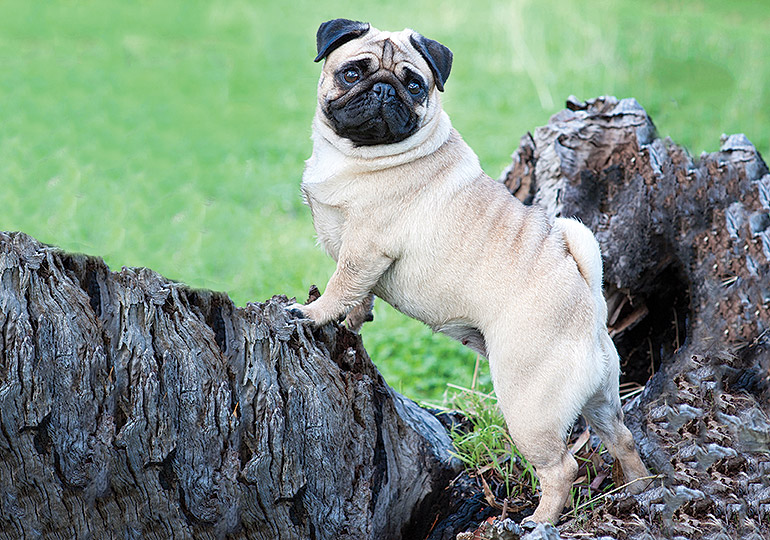GROUP 1 - TOYS
History
The Pug is considered one of the oldest canine breeds; its history can be traced back to around 700 BC at the time of Confucius and prior. It was imported into Europe from China in the 16th century with the aid of the Dutch traders and soon became a favourite of royal households throughout Europe.
In Holland, the Pug became the official dog of the House of Orange after a Pug reportedly saved the life of William, Prince of Orange, by giving him a warning that the Spaniards were approaching in 1572. When his grandson, William III, and his wife, Mary II, later travelled to England in 1688 to take the throne from James II, they took their Pugs with them. By 1790 the Pug’s popularity spread to France where Josephine, Napoleon’s wife, depended on her Pug (called Fortune) to carry secret messages under its collar to her husband while she was imprisoned at Les Carmes.
Today, the Pug is a popular companion worldwide, although it is known by many other names; ‘Mops’ in Germany and Holland, ‘Mopsi’ in Finland, ‘Carline’ in France and ‘Doguillo’ in Spain.
Temperament
A dignified and intelligent dog with great charm, the Pug has amazing communication skills; its expressive and wrinkled muzzle, body language and the varied sounds it makes clearly tell its owner what it wants and how it is feeling. It is an even-tempered dog that is both lively and happy. It can be strong-willed but is rarely aggressive.
Appearance
Today, the Pug is a square, stocky dog with a deep chest and well-developed muscle. It has a large, round head with wrinkles and a strong, thick neck that is slightly arched. The eyes are dark with no white showing when looking forward. The tail is curled, with a double curl being considered perfection. The Pug moves with a slight roll of its hindquarters. The only colours available are various shades of fawn and completely black. The fawn Pug features a black muzzle, ears and trace (a line from head to tail).
Maintenance
The Pug’s facial creases need to be kept clean to avoid irritation and infection. The top of the nose is prone to becoming dry and cracked, and may require an application of pawpaw ointment to keep it in good condition.
Despite a short coat, the Pug sheds profusely. The fawn Pug appears to shed more hair than its black counterpart. A shedding tool is useful and this task is best performed outside on a table, as the amount of coat removed is often astounding.
Health
Generally, the Pug is a tough, small dog with a lifespan around 12 to 15 years. However, because of the breed’s love of food, it can be prone to obesity. This can be easily avoided with exercise and a healthy diet.
As the Pug’s face is flat, its eyes are more susceptible to damage than dogs with muzzles. The breed can be prone to skin disorders or reactions to pollens or grasses.
Suitability
The Pug seems to have an affinity for children and is robust enough for a good game. Being an adaptable dog it is equally happy to sit quietly with you and watch television. It is generally a quiet dog; its bark is quite muffled, making it good for unit living. The Pug has been bred purely as a companion dog and thrives on being involved with its human family, so is not to be left alone in the backyard.
Words: Sue King, on behalf of the Pug Dog Club of NSW (2014)
Image by Ingrid Matschke Photography
In Conclusion
Now you know a little about the Pug, you may think that this is the dog for you. Before you make a decision, please make contact with the breed club or your State controlling body for purebred dogs. They will be able to give you information about available puppies and also suggest dog shows where you can see the breed and speak to breeders. In this way you will gain a better perspective of the Pug and its needs, and whether this breed would suit your lifestyle.
















